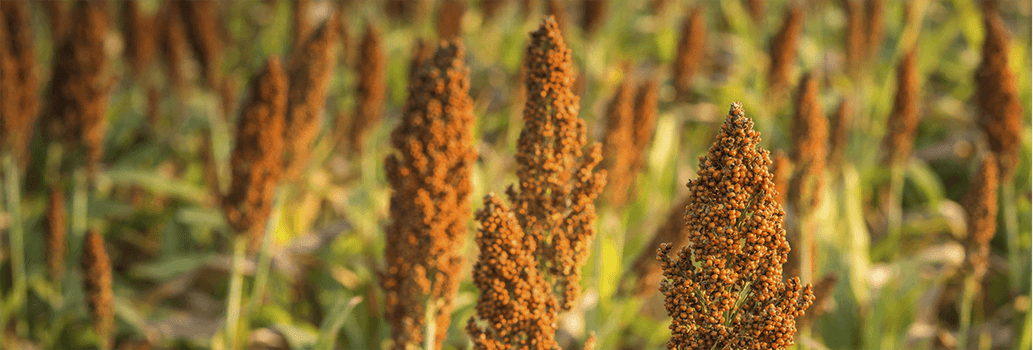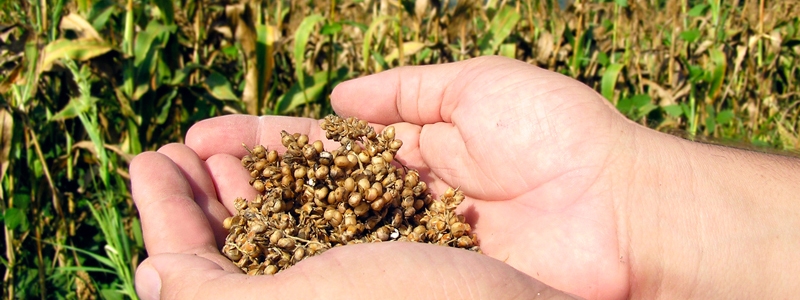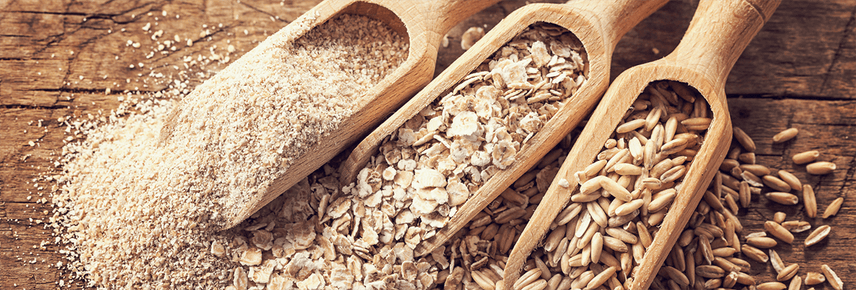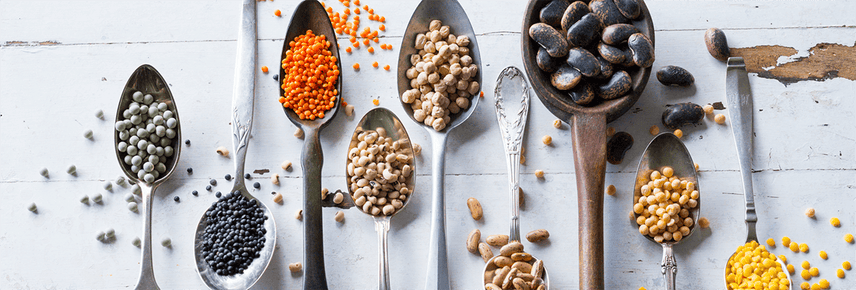For many, sorghum is a new food, however it’s been an ancient grain native to Africa for many thousands of years. It has proven to be a durable and good rotational crop as it is drought-tolerant, can survive cool weather and environments with unreliable water supply, and can even grow in high-rainfall areas. Today, sorghum is grown and used worldwide and is Australia’s third largest crop.
Sorghum varieties range in colour from white, pale yellow, brown, deep purple, and deep red which has been shown to relate to varying polyphenol content. Polyphenols are important bioactive compounds that are found in all plant foods and have various health benefits.
Sorghum is a staple in Africa and Asia with the whole and part of the grain, and flour used across a range of foods. It is also gaining traction as a wheat substitute to produce gluten-free bread, pasta, porridge and biscuit alternatives. An audit of Australian supermarkets in 2020 found that while sorghum is still emerging in the food supply, it was mainly present in breakfast cereals followed by snack bars.
Sorghum uses
Sorghum can add a delicious nutty flavour and texture to your breakfasts, salads, or meals. Try starting your day with a sorghum-containing breakfast cereal, cook sorghum grains into a warm creamy porridge or serve as an ancient grain pairing with your favourite curry.
Sorghum can be cooked like rice, popped into popped sorghum (it looks like popped corn but smaller), and sorghum flour or flakes can be made into sorghum flat bread, tortillas, vegetable patties or muffins and is a great gluten-free alternative flour.
Subscribe to Wholicious Living to stay up-to-date with the latest health and nutrition advice.
How to cook sorghum
Sorghum grain can be prepared just like rice, barley, quinoa or other wholegrains. You can cook it in a rice cooker, slow-cooker or on your stovetop. Cooked sorghum grains can be easily stored in a sealed container in your fridge or freezer to reheat and reuse later.
Where to buy sorghum
Sorghum breakfast cereal biscuits, sorghum grains, sorghum flour, and sorghum-based snack foods are becoming more available in local supermarkets across Australia and New Zealand, especially in the breakfast or health food aisles. But if you’re struggling to find it, try buying your sorghum from health food stores or an African or South African food store.
Reasons to try sorghum
1. Wholegrain goodness
Sorghum is a quality wholegrain, providing important nutrients including protein, dietary fibre and a range of minerals, vitamins, and phytochemicals.
2. It's gluten free
Sorghum is naturally gluten free and provides a fantastic option for those with coeliac disease or sensitivities to gluten or wheat.
3. Low GI
It may assist with keeping you feeling fuller for longer as well as helps with blood glucose control and weight management.
Research deep dive: Sorghum foods have been shown to have favourable effects on blood glucose levels in people with normal and elevated blood glucose. Sorghum may also help you with feeling more satisfied after meals, however, more research is needed to understand whether sorghum may assist with weight management1-4.
4. Heart healthy
Like all wholegrains, sorghum is naturally low in saturated fat and may help to keep your cholesterol down and reduce your risk of heart disease when incorporated as part of a healthy diet. Following a diet low in saturated fat is cornerstone advice from leading heart health organisations such as the Heart Foundation and helps to manage elevated blood cholesterol levels and protect against heart disease.
5. Fibre
For a healthy gut and reduced constipation. Sorghum being naturally gluten-free provides a source of fibre that can be incorporated as part of a gluten-free diet and support gut function.
6. Packed with nutrients
Sorghum is a source of fibre and contains several micronutrients such as B-group vitamins, vitamin E, selenium, magnesium, potassium, iron, zinc and phosphorus. It also contains protective phytochemicals (natural chemicals made by plants), primarily those known as flavonoids, phenolic acids, and tannins. The level and type of phytochemicals differs by grain colour, with coloured varieties typically being richer sources of various phytochemicals. Sorghum is also naturally free of gluten.
7. Antioxidants and phytochemicals
They're rich in phenolic compounds, flavonoids, and tannins, which may help to protect your body from chronic diseases like heart disease and diabetes.
Research deep dive: Studies have shown that darker coloured sorghum varieties (brown and red) tend to have greater levels of antioxidant compounds like polyphenols, and that these compounds are retained even after sorghum grains are processed into flour or sorghum food products.2-6. The wholegrain (non-refined forms) also possess higher levels of antioxidant compounds7-8. Sorghum foods have been shown to improve antioxidant status of both healthy individuals4-5 and those with a chronic disease6.
While we’re starting to understand more about the health benefits of sorghum, more human clinical studies are needed to help build the knowledge base relating to various sorghum varieties and how it may be used to assist with targeting specific health needs. In the meantime, it remains a fantastic option to incorporate into your wheelhouse of grain foods, particularly if you are searching for a gluten-free alternative.
Looking for healthy recipes? Explore our collection of over 500 healthy, dietitian approved recipes and subscribe to Recipe of the Week for free weekly recipe inspiration!






